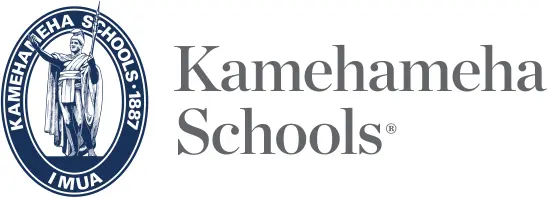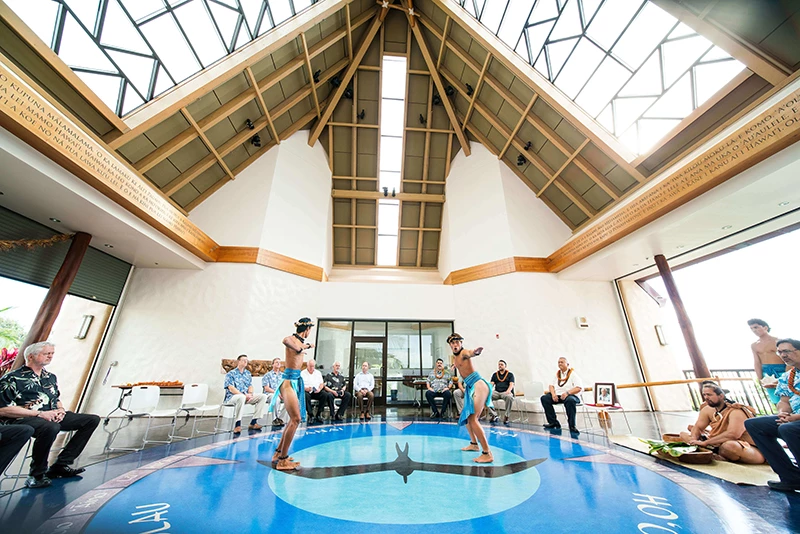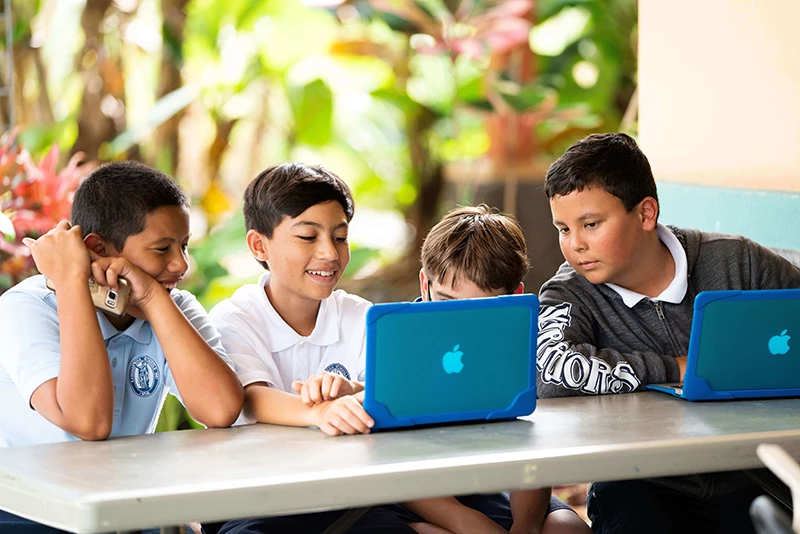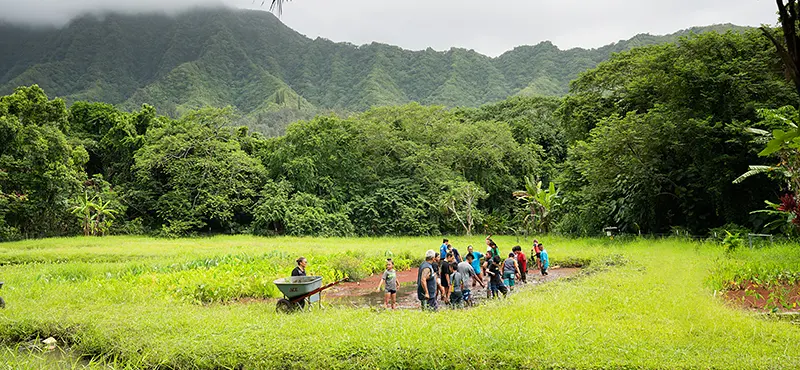June 24, 2025

This mo‘olelo first appeared in I Mua magazine. Read the full issue.
Story
Ku‘ualoha Kauanoe-Luda
Photos
Chelsie Machado KSM’08
As foundations are poured and buildings rise, something deeper is returning to Lahaina — the sense of community rooted in culture and ‘āina.
Earlier this year, Ku‘ia Agricultural Education Center, a KS Kaiāulu partner, hosted workshops for families affected by the fires to reclaim their roots in the famous ahupua‘a. Led by Lo‘iloa, a Maui nonprofit dedicated to healing through Hawaiian practices, keiki and kūpuna worked side by side, carving boards and stone pounders to prepare kalo — some replacing cherished tools lost in the flames.
Instructor and Lo‘iloa founder Kawewehi Pundyke, along with his daughter A. Makana Pundyke KSM’12 and son-in-law S. Kupono Cabanas KSM’12, made the long pre-dawn drive from Upcountry, hauling tools and safety gear. Purposefully selecting stones from Lahaina, Pundyke pre-cut them to help families jump-start the second session of their workshop.
The former police officer and pastor has seen firsthand the impact of teaching papa ku‘i ‘ai and pōhaku ku‘i ‘ai. While working with struggling youth in detention centers, he taught them to grow kalo in ‘Īao and craft their boards for harvesting. For many of those students, the hands-on experience forged a deeper connection to their Hawaiian identity and sense of belonging.
“We’re up here, looking out over all that was lost but they get to say, ‘We’re still here,’” Pundyke said of the Lahaina cohort. “To stand here and make something — that’s resilience. I hope this class helps them to believe in themselves because every time they ku‘i, they’re going to remember what they can build.”
For some, the symbolism was undeniable. After finishing her pōhaku, one resident went straight to the waterfront, where the foundation of her family home was being poured that same day — a reminder of the small and big revivals in Lahaina.
Even for those who had crafted these tools before, the experience felt different. Pā‘ele Kiakona KSH’13, a lead organizer for Lahaina Strong, said working alongside others renewed his energy.
“Lahaina literally means a relentless, unforgiving sun, and I take that to heart,” Kiakona said. “There are days it’s hard, but I am of Lahaina and I will continue to be relentless.”
For Ku‘ia Agricultural Education Center founder Kaipo Kekona, the papa and pōhaku are symbols of Hawaiian innovation and perseverance. The longtime farmer and educator sees the resurgence of these traditions as a guide for restoration, leaning on Lahaina’s tenacious history far preceding August 2023.
“When we take what is produced and create something of added value, it transforms the community,” Kekona said. “Before money dictated economics, this process — turning kalo into poi — created value, strengthened families and shaped how we cared for one another.”
That’s why he invited families who aren’t just recovering but leading the way for Lahaina’s future. “We need more opportunities like this,” he said. “The ones doing the work — we’re burning out. We have to find ways to recharge, to stay in these hard conversations and keep pushing forward.”
As ‘ohana prepared pa‘i ‘ai and talked story over lunch, the workshop reaffirmed what Kekona has always known: True resilience isn’t just enduring hardship — it’s rising as a lāhui. “We’ve already proven we’re resilient. You don’t have to push us any harder to prove that,” Kekona said. “Now we need support. And when that’s too hard to find, we make our own.”









